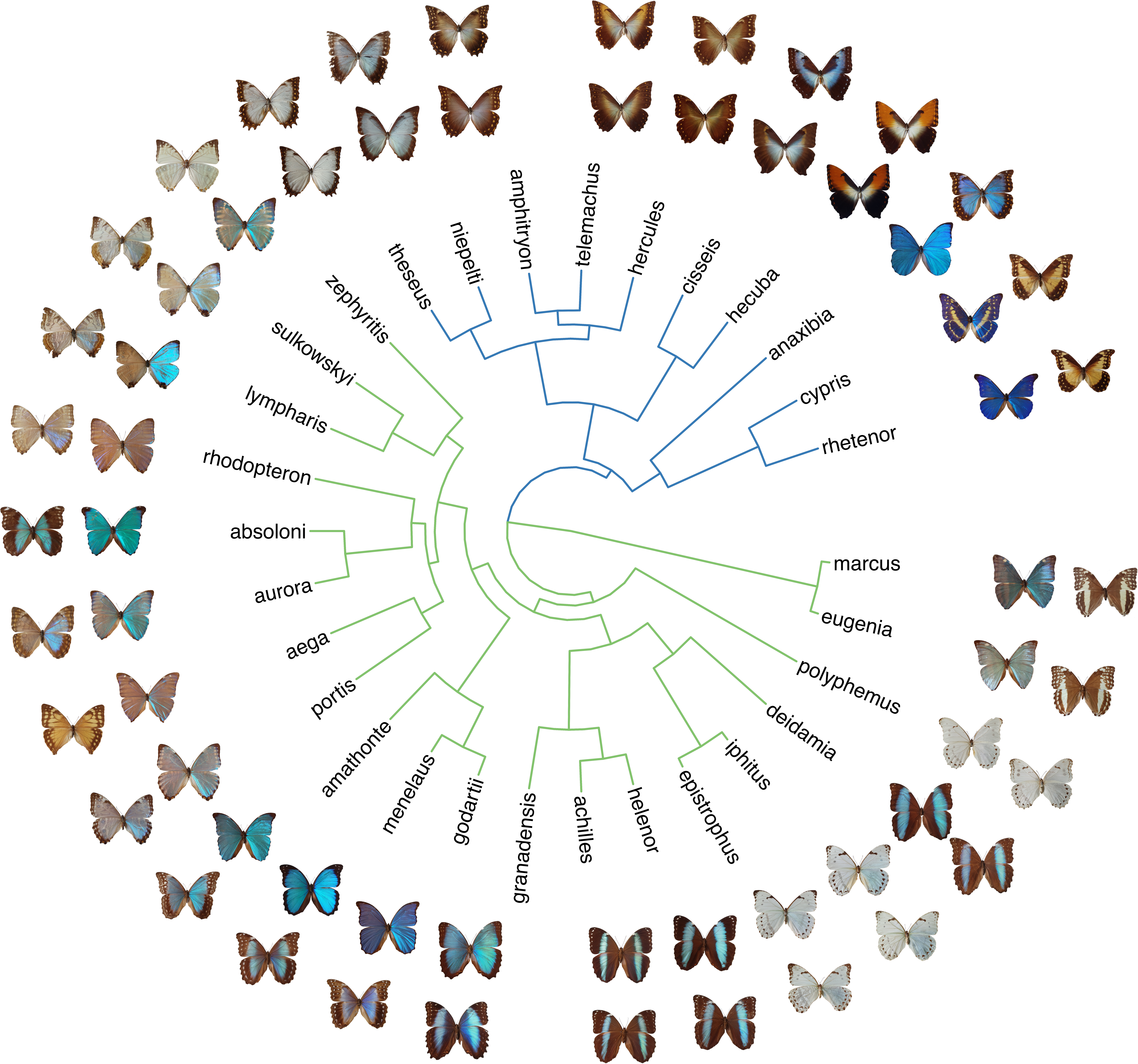Butterflies are colourful and recognition of specific wing colour pattern is likely use as a (1) species recognition and (2) mating cue. The evolution of wing colour pattern likely trigger the evolution of colour vision. In this project we are trying to investigate how duplication events in the eye photopigments (opsins) could tune the ability for butterflies to discriminate location and sex of closely related mimic species (Ledamoisel et al., 2025).
Phylogeny of Morpho butterflies genus (from Chazot et al., 2016) splitted in 2 group: a clade of canopy species (blue line) and a group of understory species (green line). Dimorphism between male (internal pictures) and females (external picture) is variable but often implies differences in blue coloration.
Chazot, N., Panara, S., Zilbermann, N., Blandin, P., Le Poul, Y., Cornette, R., et al. (2016) Morpho morphometrics: Shared ancestry and selection drive the evolution of wing size and shape in Morpho butterflies: MORPHO MORPHOMETRICS. Evolution, 70, 181–194.
References
2025
-
Evolution of opsin genes in closely-related species of butterflies specialized in different microhabitats
Joséphine Ledamoisel, Andrew Dang, Julien Devilliers, Tiphaine Marvillet, Sophie Lemoine, Manuela Lopez-Villavicencio, Adriana Briscoe, Vincent Debat, and Violaine Llaurens
bioRxiv, Oct 2025
Multiple selective pressures can shape the evolution of color vision in animals, by acting on the co- evolution of the opsin genes. How do adaptive processes shape the duplications of opsins, the evolution of their amino acids and the modification of their patterns of expression? At large phylogenetic scales, natural selection due to the contrasted light environments has been found to have a profound impact on the evolution of the opsin gene family. However, in closely-related species, species interactions due to sexual selection or competition may also influence opsin evolution. Here, we investigate the diversification of opsin sequences and their expression in closely-related blue Morpho butterfly species, living in different microhabitats, to shed light on the effect of biotic and abiotic selective pressures shaping the evolution of their opsin gene family. First, we combined genomics, transcriptomics and immunochemistry to precisely characterize the expression and the spatial distribution of the opsin proteins found in the eyes of Morpho helenor. We found unique ommatidial types compared to other butterfly species. We then investigated the evolution of opsin genes among 18 Morpho species, found signature of positive selection on two opsin genes, and identified key co-evolving amino-acids shaping the diversification of the Morpho visual system. We showed that such opsin evolution was correlated to both light environment and wing coloration, highlighting the joint effect of several selective pressures in the evolution of those proteins. Overall, our study underlines the peculiar evolution of visual systems in closely-related species specialized in divergent microhabitats.Competing Interest StatementThe authors have declared no competing interest.European Union (ERC-2022-COG - OUTOFTHEBLUE - 101088089)Human Frontier Science Program
